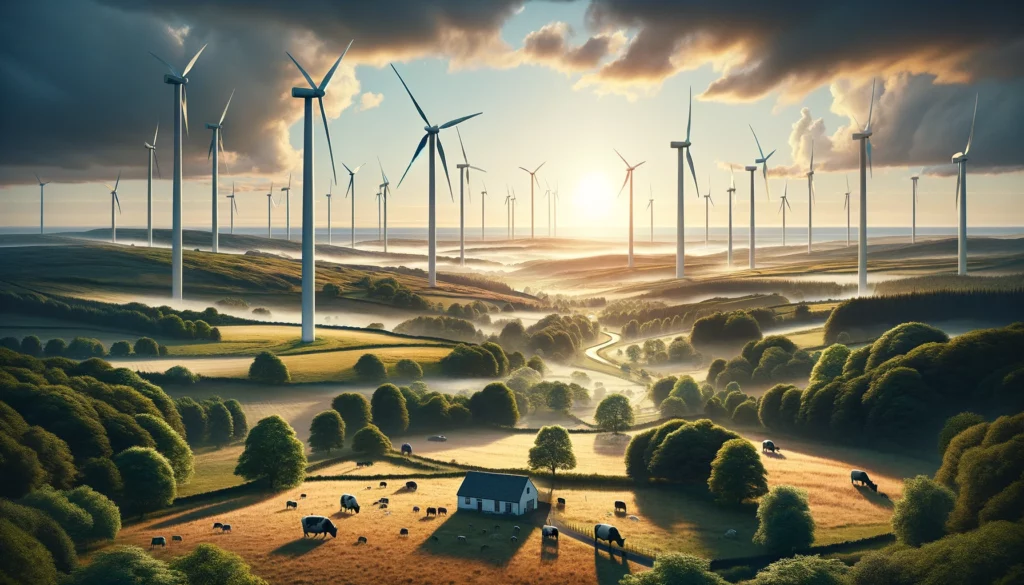
Some 70% of Americans want the country to prioritize climate change and move towards carbon neutrality. But although people support something in principle, their tune can change when it comes to their own personal space. For instance, a lot of people support the development of renewable energy, but don’t want any such developments close to their property. This is the so-called NIMBY problem.
The NIMBY (Not In My Back Yard) approach is a common social phenomenon. Individuals or communities oppose certain developments or projects — such as wind turbines — because they do not want them located near their homes. This is challenging because they do recognize the potential benefits these projects could bring to society at large. This is especially prevalent for nuclear energy, but it also happens with renewables, as people fear these structures can bring property values down.
However, according to a new study, that’s not the case.
Wind turbines and property value
NIMBY opposition to wind turbines happens in several forms, but one of the most cited reasons for opposition is their impact on the landscape. Turbines can be seen as industrial structures that detract from natural and rural vistas, potentially disrupting the visual harmony of an area. Many homeowners fear that their conspicuous presence could lower property values.
This opposition can be a strong impediment to renewable energy development, so it’s worth addressing. That’s why an international team of scientists from the German Potsdam Institute for Climate Impact Research (PIK), the Italian Centro Euro-Mediterraneo sui Cambiamenti Climatici (CMCC) and the University of California, Berkeley analyzed the majority of home sales in the U.S. in the last 23 years.
They correlated the house sales with data on wind turbine development. Overall, they analyzed over 300 million house sales and 60,000 turbines.
“Unlike previous studies, we did not only consider proximity but also the actual visibility of wind turbines”, says Wei Guo, a CMCC researcher and first author of the study. “We calculated whether you can see the turbine — or whether there is a mountain in the way, for example — and if so, how the house value changes compared to other houses in the same area where residents cannot see the wind turbine.”
What the data show

The results show that usually, when wind turbines are built, it negatively affects housing prices in the area. Prices can drop by up to 8% when a wind turbine is built less than 2 kilometers away. But this isn’t the end of the story; it’s just the beginning.
For starters, wind turbines are rarely built this close to properties. Of the 300 million house sales assessed, just 250,000 buildings (less than 1 in 1000) are built within 4 km of wind turbines — let alone 2 km. And then, this price drop doesn’t necessarily last. Property values bounce back in a relatively short period.
“The impact of wind turbines on house prices is much smaller than generally feared: In the U.S., it’s about one percent for a house that has at least one wind turbine in a 10 km radius”, explains Maximilian Auffhammer, a Professor in the Department of Agricultural and Resource Economics at the University of California, Berkeley and co-author of the study. “And what really surprised me is that the house value bounces back to the original price over the years.”
In fact, the study authors note that for wind turbines built after 2017, there was no longer any effect at all.
Harmless and helpful
These findings suggest that people get more and more accustomed to wind turbines over time and the fear against wind turbines ruining property prices is only justified in the very short term. Over the long term (in the US at least), wind turbines don’t seem to negatively affect house prices.
“Our research responds to some arguments of local opposition against wind turbines, the classic ‘Not In My Backyard’ problem that is a hot topic not only in the U.S. but also in Europe and Germany”, explains Leonie Wenz, PIK scientist and co-author. “In the big picture, it’s about finding a balance between the global climatic benefits of renewable energy and the local impacts on communities nearby. Our estimates of how wind turbine visibility affects house values could be a basis for compensating local homeowners. However, our study also underlines that these impacts have been small in the last two decades, and that we can expect them to become even less of an issue in the future.”
Journal Reference: Wei Guo, Leonie Wenz, Maximilian Auffhammer (2024): To see or not to see: The visual (dis)amenity value of wind turbines. Proceedings of the National Academy of Sciences. [DOI: 10.1073/pnas.2309372121]









